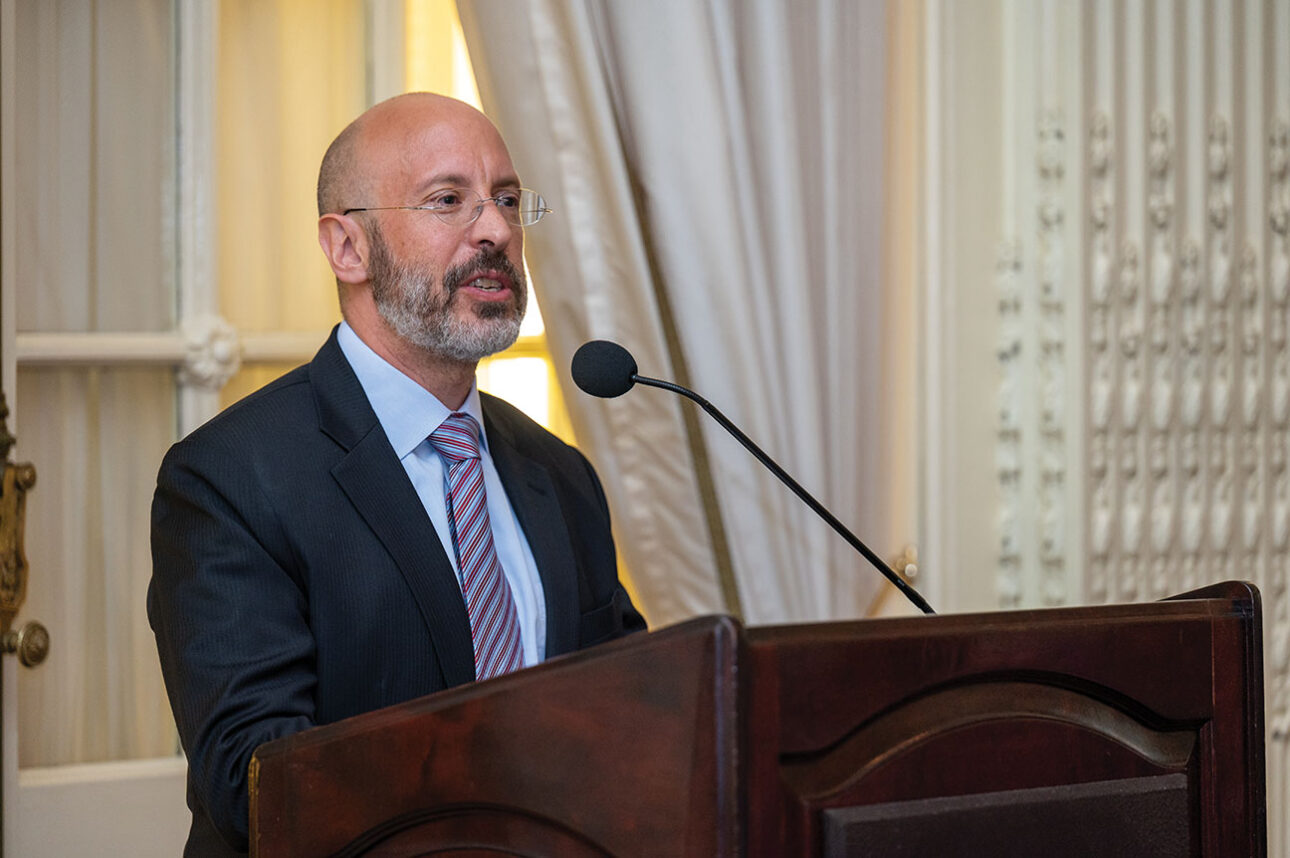Ambitious girls looking for role models among successful and accomplished women of the past might turn to scientist Marie Curie, aviation pioneer Amelia Earhart or social-justice champion Eleanor Roosevelt.
And then there was Altina “Tina” Schinasi.
Tina grew up in the opulent splendor of a New York mansion, became a painter and innovative sculptor, then film producer, inventor, business executive, backer of Martin Luther King Jr. and helper of Jewish refugees.
With all that, she was a thoroughly liberated and independent woman whose fourth husband testified to her undiminished sexual appetite when she was in her 60s and 70s.
Sounds like a great character for a biopic, and because she was also blessed with children and grandchildren who became filmmakers, the documentary feature “Altina” is now ready for public screening.
Altina Schinasi Sanders Barrett Carey Miranda (1907-1999) was raised in a white marble mansion with 12 bedrooms and 11 bathrooms, now an official New York City landmark that is still standing at Riverside Drive and West 107th Street in Manhattan.
The master of the mansion, Morris Schinasi, arrived in New York from Turkey as a penniless Jewish immigrant, going on to invent a cigarette-rolling machine at a time when people still rolled their own. He branched out into making and selling his own brands of cigarettes, packed with strong imported Turkish tobacco.
Schinasi managed to build this business empire without learning how to read or write, but he spoke eight languages fluently.
Tina attended a predominantly Episcopalian boarding school, where she got her first youthful taste of anti-Semitism.
Despite her family wealth, she went to work during the Depression designing window displays for Fifth Avenue stores, collaborating with surrealist painter Salvador Dali on some assignments, and also studying under German exile artist George Grosz.
Annoyed by the unflattering spectacles worn by women, Tina created Harlequin — or cat’s-eye — frames, which swept the country in the 1930s. Subsequently, she established her own company to distribute her invention.
Striking out as an artist, she experimented with bold paintings, showing the influence of Picasso and Chagall. Then, turning to sculpture, she created “humanistic” benches and chairs, which she dubbed “chairacters,” depicting lovers in passionate embrace or coolly turning their backs on each other.
In the 1940s, she moved to Los Angeles and directed her talents toward making a documentary film. Titled “Interregnum” (“Germany Between the Wars”), the 1960 film tracked the artistic and political career of her ex-teacher Grosz, whose biting anti-Nazi caricatures led to his forced exile when Hitler came to power.
This first-time effort won her an Oscar nomination and the prestigious Golden Lion at the Venice Film Festival.
During the civil rights confrontations of the 1950s and ’60s, she befriended Martin Luther King Jr. and obtained his consent to make a film about his life and struggles. The project was too controversial at the time, and Tina was unable to get studio funding and backing, said Peter Sanders, her grandson and director of “Altina.”
During the communist-hunting era of the 1940s and ’50s, Sanders noted, Tina sheltered in her Beverly Hills home movie director John Berry, who was trying to avoid a congressional subpoena.
Parallel with all these varied activities, she married a procession of husbands. In chronological order, they were architect Morris Sanders; Eric Barrett, a Viennese doctor; Charles Carey, who co-produced “Interregnum” with her; and, finally, Celestino “Tino” Miranda, a creative refugee from Castro’s Cuba who joined Tina in her painting and sculpture studio.
Miranda makes for one of the more arresting figures in the “Altina” documentary. He married the considerably older Tina in 1981, when she was already in her 70s, but, speaking in Spanish, he tells the film audience, “She was hot; she liked sex. She didn’t just lie there; she had the stamina of a 25-year-old.”
To borrow from satirist and songwriter Tom Lehrer’s paean to the much and famously married Alma Mahler, “A woman like this makes one realize how little one has accomplished in one’s own life.”
In making his documentary, director Peter Sanders was greatly aided by the discovery of footage shot by Morris Sanders, Tina’s first husband, during their honeymoon. Even more valuable was a two-hour interview filmed by Tina’s son, Terry Sanders, when she was 84.
During the last decade of her life, Tina and husband Celestino lived in Santa Fe, N.M., and Peter Sanders joined them for half a year at their combination homestead and artists’ studio.
He remembered his grandmother as cool and private, not the hugging type, but an almost surreal person as an artist.
“I tried to decode what her paintings and sculptures meant,” he said. “And everywhere there were animals, inside and outside, peacocks, sheep, Chinese roosters and Bernese Mountain Dogs.
Tina was not a conventionally beautiful woman, yet she attracted men throughout her long life. The reason, Peter Sanders believes, was partially her wealth and social standing, but even more her sense of fun, artistic sensibility and sexuality.
Asked about the Jewish aspect of his family tree, Sanders observed, “My grandmother Tina was proud of her Jewishness, deeply affected by the rise of the Nazis, and personally furnished 13 affidavits to enable Jewish refugees to enter the United States. But we were never practicing Jews in the religious sense.”
An upbeat aspect of the film is the musical score, including ragtime and jazz, reflecting different decades of Tina’s life.
Following five years of work, “Altina” came in at a budget of about $250,000, mainly underwritten by Tina’s granddaughter Victoria Sanders, who first conceptualized the film, and by executive producer Diane Dickensheid.
The documentary opens Sept. 19 at the Laemmle Music Hall in Beverly Hills.























 More news and opinions than at a Shabbat dinner, right in your inbox.
More news and opinions than at a Shabbat dinner, right in your inbox.